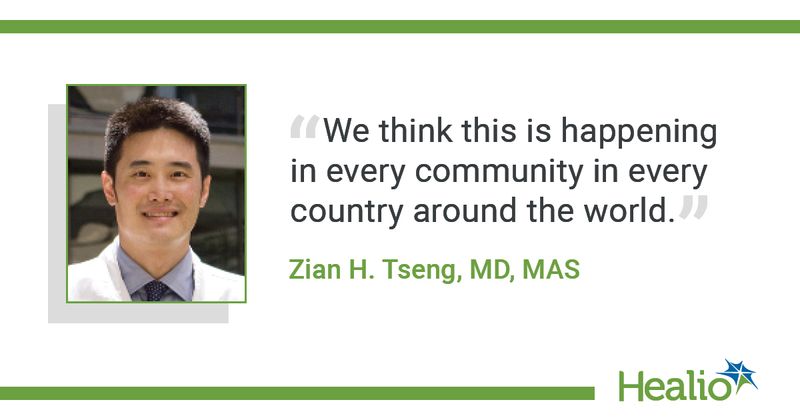One in six overdose deaths misclassified as cardiac arrest
A postmortem review of 771 deaths initially attributed to cardiac arrest in San Francisco showed that more than one in six were actually the result of a prescription or nonprescription overdose.
“We think this is happening in every community in every country around the world,” Zian H. Tseng, MD, MAS, cardiologist and electrophysiologist at the University of California, San Francisco, told Healio Primary Care.

Tseng and colleagues reviewed postmortem toxicology reports of 529 patients (159 women) who succumbed to out-of-hospital cardiac arrest from Feb. 1, 2011, to March 1, 2014. The researchers also reviewed postmortem toxicology reports from an extended cohort of 242 patients who were documented to have died from the same cause after March 2014 — but not all of whom had autopsies.
Tseng and colleagues found that 15% of the deaths in the first cohort and 22% of the deaths in the extended cohort were adjudicated as occult overdoses.
Researchers also found that compared with patients with non-overdose cardiac arrest deaths, those with overdose deaths were younger and more commonly white or Black than Asian or Latino. In both cohorts, the most common drug classes associated with overdose deaths were opioids, sedative-hypnotics and stimulants. Most people in both cohorts with overdose deaths tested positive for multiple intoxicants (75.9% and 55.6%, respectively).
“Many of these deaths involved people in their 60s and 70s who were sick,” Tseng said. “Many times, the deaths involved prescription drugs, including opioids. “Some deaths were the result of interactions with their prescription medicines. Our data might also suggest a broader use of reversal agents at the scene of resuscitation, since it does not take much time to use, is inexpensive, has very little downside and many lives could be saved.”
Tseng said that based on the study data, his research team is developing prediction scores and models to determine if a cause of death is an overdose.

